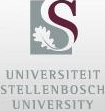Today the Laser Research Institute in the Department of Physics at Stellenbosch University is regarded as one of the four major centers for laser physics in South Africa and Africa, with infrastructure similar to major overseas centers.
Yet when it was established more than 20 years ago, Prof Erich Rohwer remembers how they had to “beg, steal and borrow" to build their own laser sources. As a young laser physicist in the 1980s, first with the University of Zululand and thereafter at the then Atomic Energy Corporation (AEC), he has been involved with the development of laser physics in South Africa and Africa for nearly 40 years.
In December 2021 Prof Rohwer was honoured for his leadership and service to photonics in Africa when he was elected as a Fellow Member of OPTICA – the leading organization for scientists, engineers and industry interested in the science of light.
Establishing laser physics in Africa
As a lecturer (and later professor) in laser physics at SU since 1989, Prof Rohwer was instrumental in the establishment of the Laser Research Institute (LRI) at Stellenbosch University and the National Laser Centre (NLC) at the Council for Scientific and Industrial Research (CSIR) in 2000, as well as the African Laser Center (ALC) in 2002. In 2007, the South African (SARChi) research chair in Ultra-Intense Laser Science was awarded to the LRI.
From 2005 to 2011, the LRI hosted six short courses for ALC students and researchers, starting with lasers and safety, followed by an introduction into lasers. By 2012 the format of the courses changed to that of specialist workshops, covering fields such as femto second lasers and its applications, laser spectroscopy, laser-based imaging, laser microscopy and imaging, laser tissue interaction and laser imaging.
In order to encourage collaboration and capacity building at African institutions, the LRI hosted nine of the 12 ALC student workshops since 2008, with an average of 40 students per workshop attending. Participants over the years came from all over Africa: Algeria, Nigeria, Ghana, Zimbabwe, Madagascar, Morocco, Kenya, Uganda, Cameroon, Tanzania, Tunisia, Egypt, Ethiopia, the Democratic Republic of the Congo, Lesotho, Burkina Faso, Gabon, Sudan and Namibia.
This resulted in numerous joint projects and collaboration, such as that between the LRI and Prof Mourad Zghal from the Engineering School of Communications of Tunis at the University of Carthage in Tunisia; with Dr P Baricholo of the National University of Science and Technology (NUST) in Zimbabwe; and Prof Paul Buah-Bassuah from the University of Cape Coast in Ghana.
According to Prof Rohwer, the success of these workshops and short courses eventually led to co-sponsorships by international institutions, such as the German exchange programme DAAD, the German BMBF (Federal Ministry of Education and Research), the United Kingdom's Newton Fund, SPIE and OPTICA. This enabled the LRI to attract more international experts and to expose students and researchers to leaders in photonics, such as Prof Tony Parker, head of Lasers for Science at the Rutherford Appleton Laboratories in the UK; and Prof Rudolf Steiner, supported by BMF in Germany.
Prof Rohwer says most of these renowned physicists became part of the African and LRI network, contributing continuously to the cause long after their first visits: “Several of them became visiting professors at SU and are still involved in co-supervising postgraduate students, or offering postdoctoral fellowships at their institutions. We would not have been able to do what we do today without this international network of support."
Building laser sources from scratch
Today Prof Rohwer remains faithful to his conviction that, especially in the African context, it is better to proverbially “beg, steal and borrow" in order to build your own laser sources and infra structure, than simply applying existing technologies, developed elsewhere.
“It is not only cheaper to develop your own lasers and instrumentation, it is also a way to thoroughly familiarize yourself with the fundamental concepts and principles involved," he explains.
For example, a tunable VUV laser source, developed by Prof Rohwer's first MSc student in 1999, can still be employed to investigate new areas in high resolution spectroscopy. Today the very same student, dr Christine Steenkamp, is one of only two women physicists in the department. In a similar fashion, over the years the network of international experts connected to the LRI was instrumental in building capacity and infrastructure.
These days, laser research groups in South Africa benefit largely from the NLC's rental pool programme (RPP), an equipment support programme funded by the Department of Science and Innovation, providing researchers with lasers and laser-based applications.
While it could be that people of his generation had no choice but to fix things when they broke, he admits that, rather than awards and prizes, as a scientist he is driven by a strong creative urge.
“I may not be one of the world's top scientists," he quips, “but that is not what drives me as a scientist. Rather, it is the simple joy of being involved in life and figuring things out for yourself, however small or big it may be," he concludes.

